Do you know how to serve in Pickleball? No worries if you don’t know. You will know once you finish the article
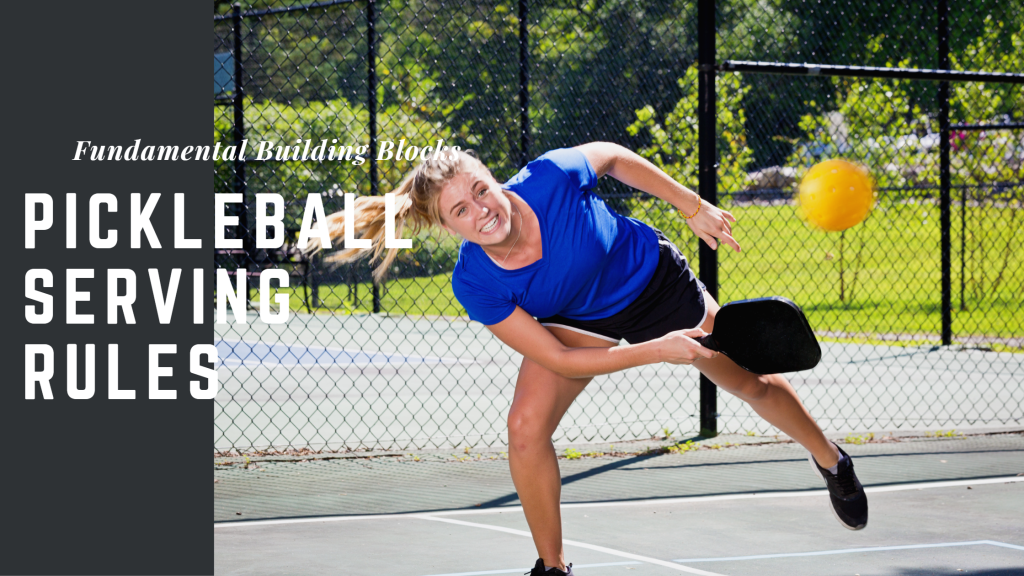
The serving rules in pickleball are the fundamental building blocks that make up the entire game. They are easy to learn and practice. In this pickleball guide, we have broken down all the rules to ensure you understand them completely. So, you know exactly how they work.
Following is the set of rules for the serving of a game of pickleball. The rules of pickleball are governed by the International Pickleball Federation (IPF). The rules are published in the official IPF Rulebook, which can be found on the IPF website.
What Are Pickleball Serving Rules?
Pickleball serving rules dictate how the serve is executed in this popular racquet sport. According to the official regulations, the server must stand behind the baseline and use an underhand motion to strike the ball, ensuring contact is made below waist level. The serve must be directed diagonally across the court, with the ball bouncing once on the receiver’s side. If the serve fails to clear the net or lands outside the correct serving area, it is considered a fault. The server must alternate serving from the right and left sides of the court, and both feet must remain behind the baseline until the ball is struck. These rules aim to maintain fairness and consistency in pickleball matches.
If you want to progress in this game, you must know these serving rules.
1. The Serve From Behind The Back Line
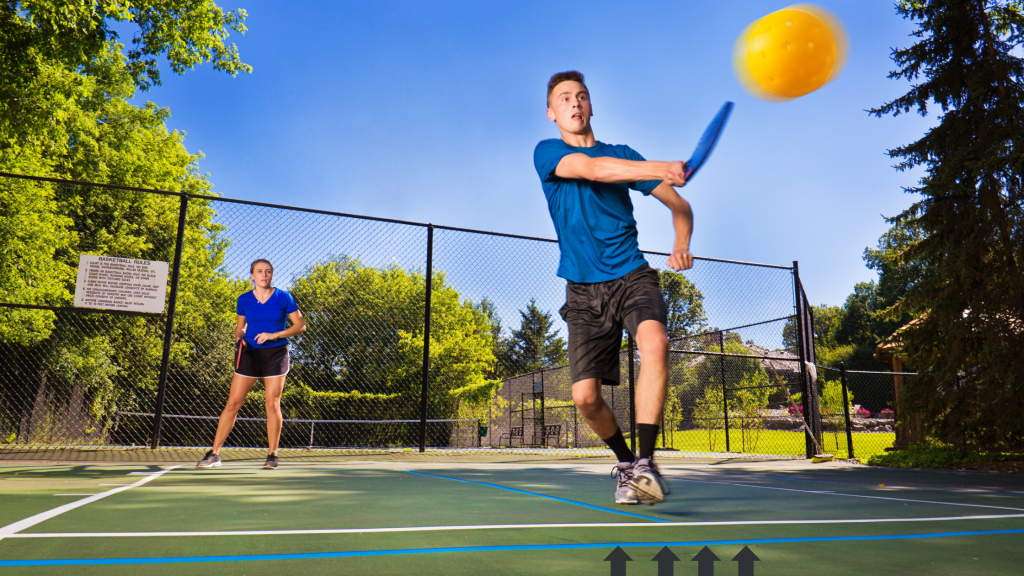
The serve must be made from behind the back line. This means that the player must stand behind the baseline when they are serving, with both feet touching the ground and no part of their body crossing the baseline. The server is allowed a few steps forward to toss and hit the ball, but both feet must be back behind the baseline before they contact the ball.
This is one of the pickleball serving rules that is designed to give an equal advantage to both players and keep them on equal footing as they compete in a match. It also ensures that each point begins with an equal opportunity for each player to make a successful shot. Serving from behind this line, allows players to focus more on their technique and strategy rather than worrying about where they have to stand during each serve.
2. The Serve Must Be Delivered Diagonally
One of the most important pickleball serving rules is that the serve must be delivered diagonally. This means that the server must hit the ball to the opponent’s court diagonally from their own court. The server must also hit the ball over a net that stands at approximately 36 inches off the floor.
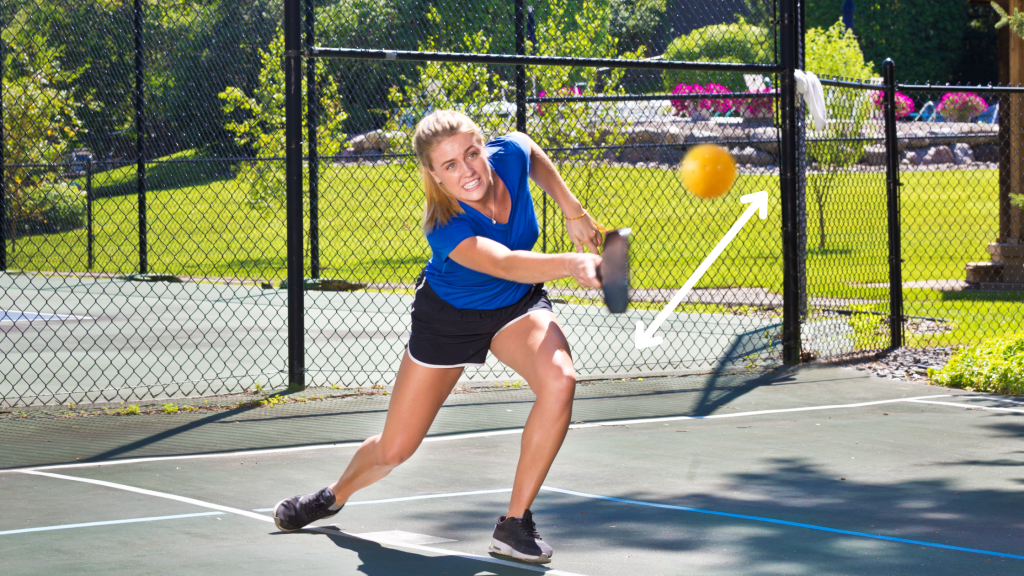
In addition, the server cannot make more than one attempt to serve the ball; if they fail to do so correctly, they lose their point. This rule ensures fairness between both players as it gives each player an equal chance of returning a serve during play.
3. One Foot On the Ground

The server must keep one foot on the ground while serving in pickleball. This helps ensure consistency with each serve. The foot that remains on the ground should be either the left or right foot – not both feet simultaneously – and must remain planted until after contact is made with the ball during a service motion.
When serving, players must also keep their feet behind the baseline at all times before making contact with the ball, as well as maintain constant contact with the court throughout their service motion. These pickleball serving rules ensure fairness in play between opponents and keep games running quickly and efficiently.
Also Read: Pickleball Ladder Rules
4. Underhand Stroke
In pickleball, the serve must be hit with an underhand stroke. This is a unique rule that sets pickleball apart from other racquet sports. The underhand stroke is used to ensure that the ball is served at a slower speed which allows for greater control and accuracy. The player should extend their arm out in front of them and make contact with the ball below their waist.

This technique helps prevent injuries and increase accuracy when serving. Additionally, it requires players to use more finesse during their serve instead of power. The underhand stroke should be practiced until the player becomes comfortable using it at game speed. Proper technique will help the player succeed in this game, which has its own unique set of pickleball serving rules.
5. Hit Before Bounce
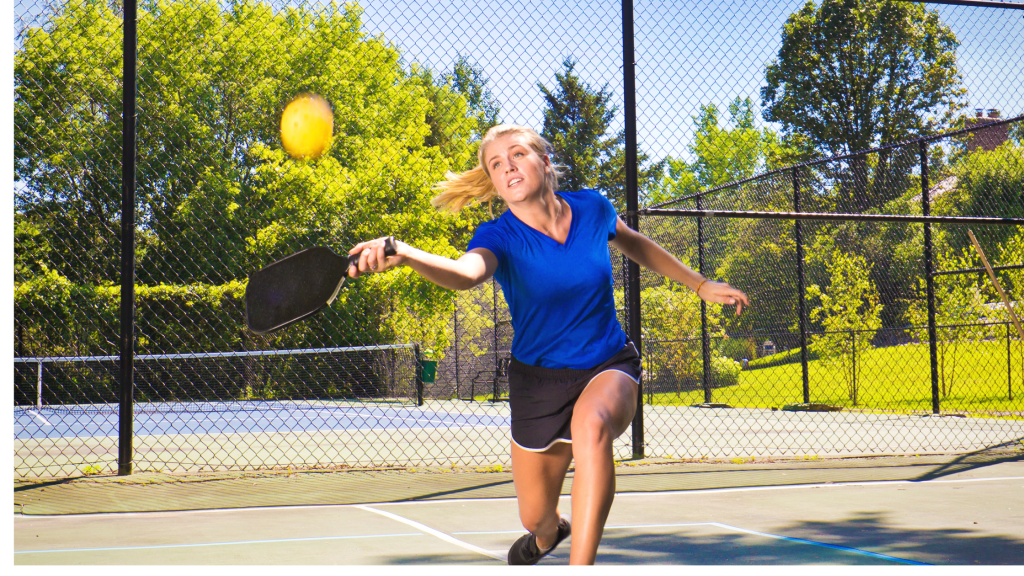
When playing the game of pickleball, it’s important to understand the rules and regulations of surrounding serving. The server must hit the ball before it bounces on its side of the court. This means that if a serve lands inbounds but bounces twice before being hit, it is illegal.
To ensure this does not happen, players must be aware of their surroundings and pay close attention when their opponent is serving.
Additionally, the server should aim to land the ball as close to their opponent’s no-volley zone as possible to put them at a disadvantage. The server may not volley after they have served until the ball has bounced once on their opponent’s side of the court. Serving is an important skill that requires practice, but when done correctly, it can give you an edge in pickleball matches.
6. Should Not Touch To The Net
This rule applies to both singles and doubles games. The player serving must make sure that their paddle does not come into contact with the net when they swing at the ball, as it will be ruled a fault. If a player serves and it hits the net, then it is a lost point for them, and their opponent will receive one point instead. This means that players need to be careful when they are serving in order to make sure that they don’t hit the net.
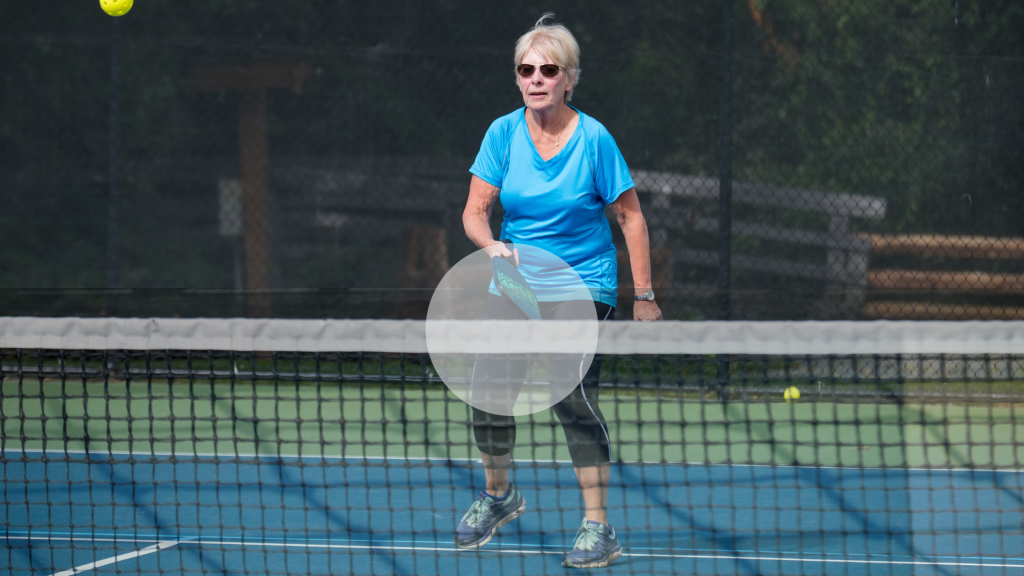
Players should also ensure that their feet do not cross over the line when they are serving, or else their serve will also be deemed a fault. All pickleball players need to understand this rule so that they can serve correctly and avoid any potential losses of points due to illegal serves.
7. Chances to Serve the Ball Legally
In pickleball, the server has two chances to serve the ball legally. The first attempt is the “serve“ and must travel diagonally across the court and over the net. If the serve is successful, then the opposing team will take possession of the ball and return it back to the server’s side of the court.
If it is unsuccessful, then a second chance is awarded to the server, called a “let.” A let allows for another attempt at serving without any penalty against either team. It’s important to remember that only two attempts are allowed; if both fail, the server loses the serve to the other team and the opposing team gets to serve.
This rule helps ensure that all players follow the proper etiquette when playing pickleball and keep play fair for both sides.
8. Choice Of Receiving Serve
Among other pickleball serving rules, this rule gives liberty to the receiver to choose which side of the court they would like to receive their serve on. This is an important advantage for the receiving team as it allows them to adjust their strategy according to how their opponents serve. The receiver should take into account the angles and speed of the serve, as well as their strengths and weaknesses, to make an informed choice when deciding which side of the court they wish to receive from.
Of course, no matter which side is chosen, both players must remain aware of and ready for any unexpected changes in direction or pace that could drastically alter the trajectory of the ball. Being able to rapidly respond and adapt to unexpected changes in pickleball can be a crucial factor in determining who wins or loses a match.
9. Bounce in the Non-Volley Zone
The receiver must let the serve bounce in the non-volley zone (also known as the kitchen) before hitting it. This rule is in place to prevent players from hitting the ball on the rise, which can lead to long, gruelling rallies that are not as fun for either player. The non-volley zone is the area of the court that extends 7 feet from the net on either side, and players are not allowed to hit the ball before it bounces in this area. If the receiver hits a serve that has not bounced in the non-volley zone, they are committing a fault and the serve will be replayed.
10. Fair Chance For Receiver
As you know now, serve is one of the most important aspects of pickleball, so it must be done correctly in order to give the receiver a fair chance to hit the ball. The server must stand behind the baseline and ensure they face the non-volley zone when they serve. They must toss the ball and hit it diagonally over the net so that it lands in the opposite court. Once the ball is served, it must bounce once before the receiver can hit it back; if it bounces more than once, then it will not count as a valid serve and must be re-served.
A valid serve requires that both feet remain on the ground until contact with the ball is made. If any of these rules are broken, then it is a fault, and a point will be awarded to their opponent. Ultimately, having a fair chance to hit the ball off each serve is essential for an enjoyable game of pickleball.
If you want to know all the other rules, then must read Top 13 Pickleball Rules
Common Mistakes – During Serving In Pickleball
There could be several common mistakes that players can make while serving in pickleball if they don’t follow basic pickleball serving rules. Some of these mistakes include:
- Not keeping your eyes on the ball: This is one of the most common mistakes when serving in pickleball. It’s important to keep your eyes on the ball and focus on where you want to hit it so that you can make an accurate serve.
- Inconsistent stance: Having a consistent stance will help make sure your serve is accurate every time. If you find yourself constantly changing your stance, take some time to practice and get comfortable with one particular stance.
- Not serving the ball hard enough: It is important to serve the ball with enough power to make it difficult for your opponent to return it.
- Not serving the ball in the correct area: In pickleball, players must serve the ball into the service box on the opposite side of the court. If you serve the ball outside of the service box, your opponent will earn a point.
- Not serving the ball with spin: It is often beneficial to serve the ball with a spinning motion, as this can make it more difficult for your opponent to hit an accurate return.
- Not using a consistent serving motion: It is important to develop a consistent serving motion that you can repeat every time you serve the ball. This will help you to serve the ball with accuracy and consistency.
- Dropping the paddle: It’s important to keep the paddle up until after you’ve made contact with the ball so that you can generate more power in your shot.
- Not gripping the paddle correctly: If you’re not gripping the paddle correctly, your shot won’t have enough power and accuracy behind it. Make sure to grip the paddle properly with your dominant hand so that you can generate more force behind each hit.
FAQs – Pickleball Serving Rules
Final Verdict
In this article “Pickleball serving rules”, it is stated that the serve must be made from behind the back line, delivered diagonally to the opposite service court, hit with an underhand stroke, and not touch the net. The server is allowed two chances to serve the ball legally, and the receiver gets to choose which side of the court to receive the serve on. In the non-volley zone, the receiver must let the serve bounce before hitting it, and the serve must be delivered in a manner that allows the receiver a fair chance to hit the ball.
I hope these serving rules are very much clear to you now but in case you still have confusion you can ask in comment section or directly contact us.

if you swing and miss the ball while trying to serve is it a fault. i’m not asking about the bounce serve just the normal way of hitting the serve out of the air but missing it.
If you miss the pickleball at the time of serve on the court, attempt to keep the rally going by taking another swing or encouraging your partner to do the same before the ball bounce twice, then a fault is committed